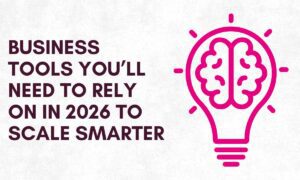In the fast-paced world of modern business, efficiency and adaptability are paramount. Companies are increasingly turning to automation workflows to streamline operations, reduce errors, and enhance productivity. But what exactly is an automation workflow, and how can it transform your business?
Understanding Automation Workflows
An automation workflow refers to the use of technology to perform tasks or processes without human intervention. By setting up predefined rules and triggers, businesses can automate repetitive tasks, ensuring consistency and freeing up valuable human resources for more strategic endeavors.
For instance, consider the onboarding process for new employees. Traditionally, this involves multiple manual steps, such as sending welcome emails, setting up accounts, and scheduling training sessions. With an automation workflow, these tasks can be triggered automatically when a new hire’s information is entered into the system, ensuring a smooth and timely onboarding experience.
Benefits of Implementing Automation Workflows
1. Enhanced Efficiency
Automation workflows eliminate the need for manual intervention in repetitive tasks, leading to significant time savings. According to a report by IBM, organizations that implement workflow automation experience increased efficiency and productivity.
2. Reduced Errors
Human errors are inevitable, especially in repetitive tasks. Automation ensures that processes are carried out consistently and accurately, minimizing the risk of mistakes. Microsoft highlights that automation reduces human errors and eliminates many time-consuming and repetitive tasks, such as manual data entry.
3. Cost Savings
By automating routine tasks, businesses can reduce labor costs and allocate resources more effectively. The Box blog emphasizes that digital workflow automation enables teams to work smarter, leading to cost reduction.
4. Scalability
As businesses grow, manual processes can become bottlenecks. Automation workflows allow companies to scale operations without a proportional increase in workforce, facilitating growth and adaptability. Atlassian notes that workflow automation allows businesses to handle an increasing workload without proportionally increasing their workforce.
Real-World Applications of Automation Workflows
1. Marketing Campaigns
Automated workflows can manage email marketing campaigns, segment audiences, and personalize content delivery. Blue Atlas Marketing provides examples of marketing automation workflows designed to streamline tasks such as sending emails, posting on social media, and managing customer data without manual intervention.
2. Customer Support
Automated ticketing systems can categorize and prioritize customer inquiries, ensuring timely responses. Salesmate.io discusses common workflow automation examples, including auto-assigning tickets and sending satisfaction surveys, to improve customer support efficiency.
3. Human Resources
From recruitment to performance reviews, HR processes can be automated to enhance efficiency and employee experience. FlowForma highlights the use of business process automation in HR, such as streamlining employee onboarding and automating supplier/customer onboarding.
4. Finance and Accounting
Automating invoice processing, expense approvals, and financial reporting can reduce errors and accelerate financial operations. DocsAutomator provides examples of business process automation in finance, including automating invoice processing and generation.
Getting Started with Automation Workflows
Implementing automation workflows involves several key steps:
- Identify Repetitive Tasks: Begin by identifying tasks that are repetitive and time-consuming.
- Choose the Right Tools: Select automation tools that integrate seamlessly with your existing systems.
- Define Triggers and Actions: Set up triggers (events that initiate the workflow) and actions (tasks that the workflow performs).
- Test and Optimize: Before full implementation, test the workflow to ensure it functions as expected.
- Monitor and Improve: Regularly monitor the workflow’s performance and make adjustments as needed.
Overcoming Challenges in Workflow Automation
While automation offers numerous benefits, businesses may encounter challenges such as:
- Integration Issues: Ensuring that automation tools integrate smoothly with existing systems.
- Employee Resistance: Addressing concerns and resistance from employees who may fear job displacement.
- Initial Costs: Managing the upfront investment required for automation tools and training.
According to Redwood, organizations use workflow automation to reduce human error and intervention, increase efficiency, and boost overall productivity.
Conclusion
Automation workflows are transforming the way businesses operate, offering enhanced efficiency, reduced errors, and cost savings. By strategically implementing automation, companies can streamline operations and focus on growth and innovation. As technology continues to evolve, embracing automation will be crucial for staying competitive in the modern business landscape.



































